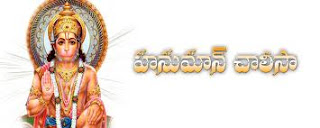Ayyappa Patalu
01 Suprabhatam సుప్రభాతం
02 Abhisekam అభిషేకం
03 Ashtothara Namalu అస్త్తోతర నామాలు
04 Padipuja పడిపూజా
05 Nirakara Niranjana నిరాకర నిరంజన
06 Naa Rendu Nayanalu నా రెండు నయనాలు
07 Harivarasanam హరివరాసనం
08 Prabhata Prardhanaప్రభాత ప్రార్దన
09 Kannamula Ganapatiye కన్నాములే గణపతయ్య
10
11 Aadukuntu Paadukuntu ఆడుకుంటు పాడుకుంటూ
12 Ade Sabarimala Choodu అదే శబరిమల చూడు
13 Irumudiye Talapetti ఇరుముదియే తలపెట్టి
14 Pandala Rakumaruda పందల రాకుమారుడా
15 Sandadi Cheukuntu సందడి చేసుకుంటూ
16 Ayyappa Saranam అయ్యప్ప శరణం
17 Sabarimala Charitamidi శబరిమల చరితమిది
18 Hariharula Putrudandi హరిహరుల పుత్రుడండి
19 Dari Bhattemu Ne Katti
20 Mahishini Mardinchina
21 Kattavale Naagudu
22 Sasthaye Dharma Sasthaye
23 Swamiye Saranu
24 Kanthimalanu Makarajyothi
25 Kondapaina Andamaina
26 Rallu Mullu
27 Adigo Vachadayyappa
28 Kartikana Irumudi
29 Maa Ayyappa
30 Alladi Alladi
31 Tannane Tane
32 Padava Nadise
33 Okatava Mettupai
34 Ayyappa Charanam
35 Varalichche
36 Palvamsa Balamani
37 Swamiye Saranam
38 Needu Namam
39 Yennenno Perulu
40 Kari Mogam Vani
41 Anna Danam
42 Geetam Padana
43 Giripai
44 Slokam
45 Manavulandaru
46 Slokam
47 Kartikamasam
48 Uru Vadali
49 Prathi Girilo
50 Slokam
51 Karuni Bhavaradham
52 Sabari Peethame
53 Okatova Tiruppadi
54 Veligene Mala meeda
55 Kaliyugamanduna
56 Panbalo Madinea Katti
57 Madio Ninne Koliche
58 Sabirigiri Kondalapai
59 Swamy Dhinakkuthom
60 Dayaganarava
61 Kondalalo Konalalo
62 Bangaru Chayala
63 Bhagavan Saranam
64 Ayyappa swamy
65 Sabarimalai Kovelalo
66 Ayyappa puja
67 Ayyappa Namaskara mantram
68 Ye Teeruga nanu
69 Slokam
70 Ayyappa padipata
71 Irumudule
72 Harihara Tanaya
73 Smaranama
74 Mahimohanangudu
75 Poogadagalana
76 Tagu Keertanalu
77 Vachchindi
78 Irumulle Kattukoni
79 Adugumundu
80 Villali veera
81 Talasi Maala
82 Saranamantu
83 Aadudam Padudam
84 Swamiye Saranu
85 Saranu Ghosha vivarana
86 Ayyappa Charita gaanam





























.GIF)







